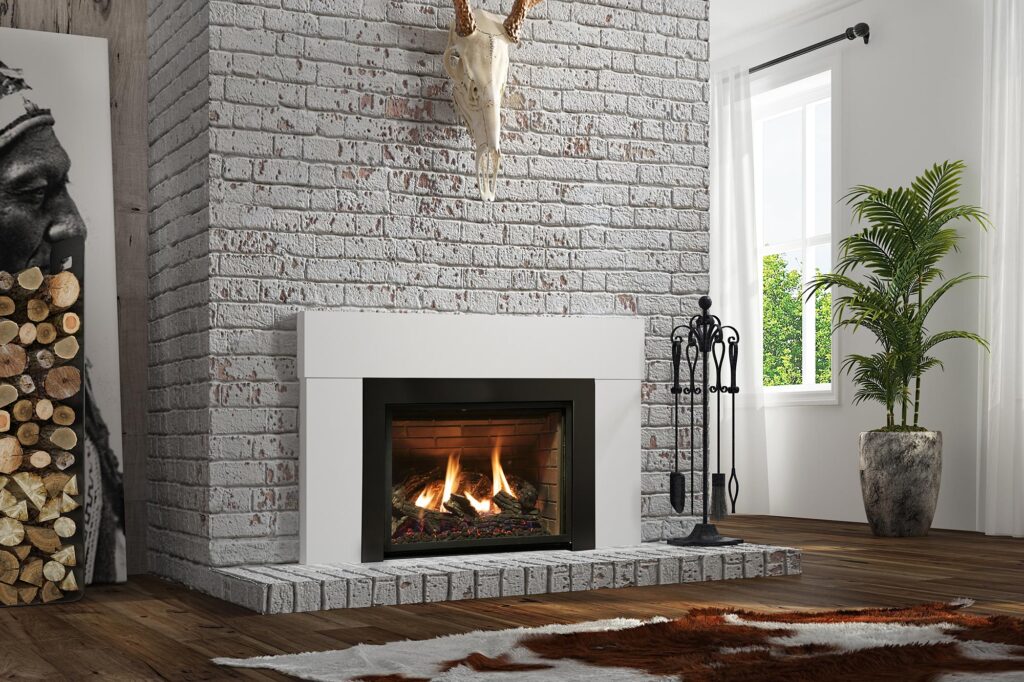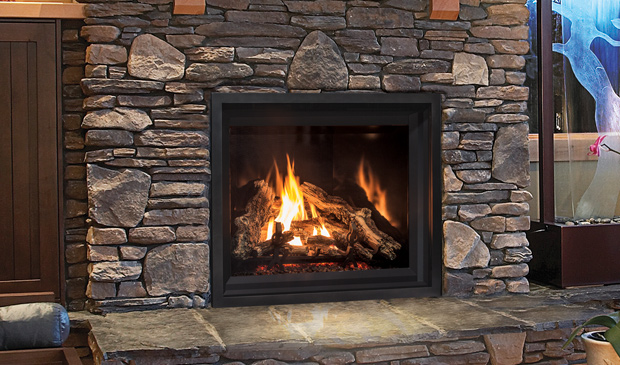If you’re searching for the term Glassfyre fireplace, you’re likely curious about a product that has become increasingly visible in upscale interiors, luxury showrooms, and design-forward living spaces. A Glassfyre fireplace isn’t just about warmth; it’s a bold design statement a sleek alternative to traditional hearths that merges flame with glass, form with function, and classic comfort with 21st-century innovation.In this article, we explore what a Glassfyre fireplace is, how it works, why it’s become a staple in modern homes, and how it reshapes the conversation around home heating, aesthetics, and sustainable design.
What Is a Glassfyre Fireplace and How Is It Different?
A Glassfyre fireplace refers to a high-design, frameless glass fireplace typically powered by clean fuels like bioethanol or electricity that offers a modern take on traditional fireplaces. The name evokes both the clarity of “glass” and the evocative energy of “fire,” combining to create a product that emphasizes transparency, elegance, and controlled heat.Unlike brick-built hearths that serve as rugged focal points, Glassfyre models are about refinement and subtlety. You see the flame, yes but more importantly, you see the room around it, uninterrupted by bulky mantels or visible vents.This kind of fireplace doesn’t just warm a space it redefines it.
Design Philosophy: Transparent, Minimal, Transformative
One of the core ideas behind the Glassfyre aesthetic is minimal intervention. These fireplaces are designed to feel like extensions of space rather than imposed fixtures. Here’s how that plays out:
- Frameless Architecture: No trim, no border. The glass seems to emerge from the wall or stand independently.
- 360-Degree Viewing: Many models are see-through, acting as room dividers that don’t block light.
- Neutral Finishes: Commonly found in brushed steel, matte black, or powder-coated white.
- Unobtrusive Control: Most versions include hidden or app-based temperature and flame settings.
Fuel Types: Clean, Modern Alternatives to Wood
Traditional fireplaces burn wood a romantic but inefficient and pollution-heavy process. Glassfyre models lean on cleaner fuels:
1. Bioethanol
- Derived from plants and burns clean with no soot or smoke.
- Great for ventless units.
- Produces real flame, though with less intense heat than gas.
2. Electric
- Offers LED-simulated flame and adjustable heat.
- Zero emissions, safe for indoor air quality.
- Remote or smart-home controllable.
3. Natural Gas / Propane
- Provides real, robust flame.
- Requires venting or gas hookups.
- Suitable for semi-permanent installations with consistent use.
Types of Glassfyre Fireplaces
Different spaces call for different shapes of fire. Here’s a breakdown of the major Glassfyre styles:
Wall-Mounted
- Attaches directly to drywall or tile.
- Floating illusion with no need for a chimney.
Built-In
- Installed flush with the wall.
- Seamlessly blends with cabinetry or media consoles.
Double-Sided / See-Through
- Sits between two rooms (e.g., dining and living rooms).
- Creates open flow with dramatic ambiance.
Tabletop / Freestanding
- Small-scale units for portable ambiance.
- Ideal for apartments, patios, or spa environments.
Outdoor-Ready
- Weather-resistant casing and drainage.
- Suits terraces, pool areas, and rooftop lounges.

Smart Tech Integration: Fireplaces for the Digital Age
Many Glassfyre fireplaces go beyond manual dials. They’re designed for modern smart living, incorporating:
- Voice Assistant Integration (Alexa, Google Assistant)
- Mobile App Controls for scheduling and flame adjustment
- Thermal Sensors to auto-regulate based on room temperature
- Safety Shutoff Systems when tipped or tampered with
This tech turns the fireplace into more than just décor it becomes an ambient system, part of your home’s climate and mood controls.
Table: Overview of Glassfyre Fireplace Essentials
| Feature | Description |
| Type | Frameless glass-enclosed fireplace with clean-line architecture |
| Fuel Sources | Bioethanol, gas, electric (no traditional wood-burning variants) |
| Primary Appeal | Minimalist aesthetics, see-through design, ambient heat |
| Installation Style | Wall-mounted, freestanding, double-sided, and built-in models |
| Popular Settings | High-end homes, condos, boutique hotels, spas, and office lounges |
| Venting Requirement | Often ventless or low-vent; depends on fuel source |
| Customization Options | Flame size, frame finish, glass tinting, remote or app-based controls |
| Target Market | Architects, interior designers, eco-conscious homeowners, luxury developers |
Why Glassfyre Fireplaces Appeal to Designers
Interior architects and home stylists are drawn to Glassfyre units for a few key reasons:
- Versatility: Can be installed into walls, under TVs, in bathrooms even on kitchen islands.
- Visual Lightness: Enhances space without cluttering it.
- Ambient Drama: Offers light and warmth without overpowering the room’s aesthetic.
- High ROI for Developers: Makes properties feel premium and tech-forward.
The Glassfyre fireplace is a dream for contemporary design philosophies especially those rooted in minimalism, Scandinavian coziness, or boutique hotel aesthetics.
Safety Considerations: Is Glassfyre Safe?
Yes, but like all appliances, proper installation and usage are essential. Here’s why Glassfyre is considered among the safest fireplace options:
- No flying embers due to enclosed glass.
- Cool-touch exteriors on many electric units.
- No gas leaks or chimney backdrafts in electric or ethanol models.
- Automated shut-off during power surges or flame inconsistencies.
Still, as with all flame-bearing devices, users should ensure:
- Children and pets are kept supervised.
- Wall mounts are secured properly.
- Fuel canisters (for ethanol) are stored safely.
Pros and Cons
| Pros | Cons |
| Sleek, modern design that suits almost any space | Typically more expensive than traditional heaters |
| Clean-burning fuel options reduce environmental impact | Some models produce less heat than traditional wood-burning units |
| Easy to install—especially electric and ventless models | May lack the nostalgic feel of real crackling wood |
| Low maintenance; no chimney cleaning or ash disposal | Ethanol models require regular refueling |
| Works well in small, modern, or high-rise living spaces | Gas models still require venting or professional hookup |
Common Use Cases
- Urban Apartments: Where chimneys aren’t an option, and aesthetics matter.
- Luxury Bathrooms: Placed near bathtubs for a spa-like ambiance.
- Hotels and Resorts: In lobby lounges, penthouses, or poolside.
- Open-Plan Homes: As see-through dividers or wall inserts.
- High-End Offices: In executive suites or client waiting areas.
It’s less about heating the entire home and more about enhancing zones of living.
Maintenance & Longevity
Glassfyre fireplaces are known for ease of maintenance, but some care goes a long way:
- Clean the glass regularly with ammonia-free cleaner to remove film or fingerprints.
- Check fuel lines (for gas) annually, or schedule a professional inspection.
- Replace ethanol canisters as needed; do not refill while flame is lit.
- Dust vents and fans (electric models) to avoid burnout.
With proper care, a quality Glassfyre fireplace can last 10–15 years or longer, depending on the model and frequency of use.
Environmental Benefits
Perhaps one of the biggest appeals of the Glassfyre design is eco-responsibility. These fireplaces:
- Reduce deforestation by eliminating wood-burning.
- Avoid CO2-heavy venting if electric or ethanol-based.
- Require less energy for heating single rooms or zones.
- Fit into carbon-neutral building plans easily.
For architects and developers aiming for LEED certification or low-emission blueprints, Glassfyre fireplaces offer both beauty and compliance.
Price Range and Value
While pricing varies based on fuel type, size, and customization, here’s a general overview:
| Type | Estimated Price Range |
| Wall-Mounted Electric | $800 – $2,500 |
| Built-In Bioethanol | $2,000 – $5,000 |
| Double-Sided See-Through | $4,000 – $9,000 |
| Outdoor / Freestanding | $600 – $3,000 |
| Custom Architect-Designed | $10,000+ |
Installation costs especially for gas hookups or flush wall-integration can add another $500–$3,000, depending on complexity.
FAQs
1. Can I install a Glassfyre fireplace in any room?
Yes, depending on the fuel source. Electric and ethanol versions are flexible and don’t require chimneys or vents.
2. Does it actually produce heat or just look good?
Both. While aesthetics are primary, most models emit heat, especially electric and gas versions.
3. Is it safe to put one under a TV?
Yes, but make sure the unit is rated for low front/top heat output and follows clearance guidelines.
4. How do I control the flame?
Many models come with remotes, thermostats, or mobile apps. Manual control is also available in ethanol versions.
5. Can I install it myself?
Wall-mounted electric units are often DIY-friendly. Built-in or gas models should be handled by licensed professionals.
6. Is there any smell from burning ethanol?
Some users report a faint scent during initial use, but it’s generally odorless with proper ventilation.
Final Thoughts
The Glassfyre fireplace isn’t simply a home accessory it’s a philosophy. A reinvention of what fire means in the home. It speaks to modern desires for cleaner air, smarter design, visual simplicity, and emotional warmth without the mess.In a world increasingly defined by the dual needs for comfort and consciousness, Glassfyre stands as a quiet yet blazing answer. It doesn’t roar like a bonfire or creak like old timber it flickers, glows, and invites calm.If you’re building, renovating, or simply dreaming, a Glassfyre fireplace may not just warm your room it may elevate your entire way of living.

